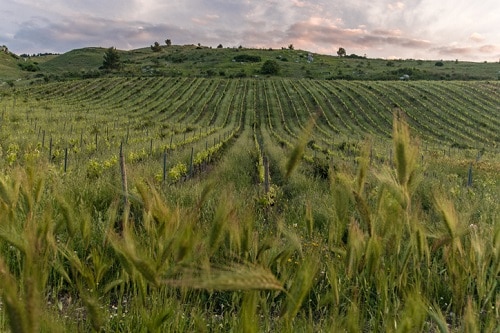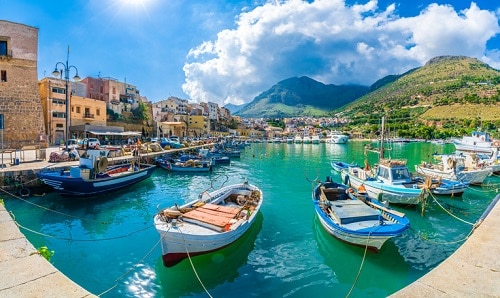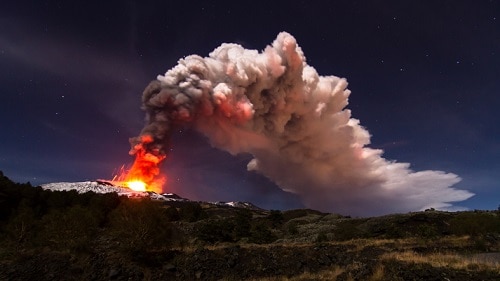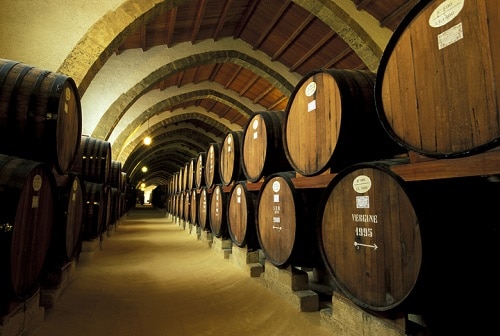Discover the Wine Region of Sicily
Last Updated on April 17, 2023.
Sicily is the largest island in the Mediterranean, and surely one of the most beautiful. It has played host to various civilizations throughout the ages: the Greeks, Arabs, Phoenicians and Romans have all left their mark in the form of temples, stadiums, and other architecture.
Italy’s most southern province is now also famed for its food and wine. The latter has seen something of a revival in recent years, with a shift towards quality over quantity – though there are still plenty of inexpensive bottles to be found.
Key Sicilian Grape Varieties
Although home to some international plantings, Sicily’s most important grape varieties are indigenous. We list those out below.
Red Wines of Sicily
Nero d’Avola – Nero d’Avola is Sicily’s most planted and best-known indigenous variety. Its name often appears on labels, and it’s a regular on restaurant wine lists – especially pizzerias around the globe. Typically it’s a deep ruby color with flavors of cherry fruits and sometimes sweet spices and licorice.
Frappato – Frappato is typically fresh, fruity and distinctly floral. It’s often blended with Nero d’Avola, though varietal bottlings also exist.
Nerello Mascalese – Nerello Mascalese is perhaps Sicily’s most acclaimed variety. Plantings in Etna have been compared to Pinot Noir from Burgundy, or Nebbiolo from Piedmont for its ability to express terroir. It is typically pale in color, elegant, and the best expressions have the capacity to age for many years.
White Wines of Sicily
Catarratto – Catarratto is vinified in huge volumes. It is often used in blends with other white grapes, such as Carricante, Inzolia, and Chardonnay. On its own, it makes a lemony but low-acid white wine. Much of it is distilled or used to create grape concentrate.
Carricante – Carricante is used to create quality white wines in the Etna region. It has high acidity and an array of citrus characters.
International Varieties Grown
Like other parts of Italy, Sicily is also planted with a number of international varieties, particularly Syrah, Chardonnay, Merlot and Pinot Grigio, but these are not its calling card.
Key Sub-Regions Within Sicily
As is common in Italian areas, Sicily is home to numerous sub-regions: one DOCG, 23 DOCs and 7 IGPs. The broad Sicilia DOC covers vineyards across the whole island and includes both indigenous and international varieties. Below, we list five of Sicily’s regions that are considered some of the most important currently.
Etna DOC
This horseshoe-shaped DOC, which straddles the north, east and southern parts of Mount Etna, has been attracting widespread critical acclaim. Nerello Mascalese is the most planted grape here and is known for its ability to reflect individual terroirs. There are plenty. Vines are planted on rugged, volcanic terrain at various aspects and altitudes.
Nerello Mascalese’s blending partner is Nerello Capuccio, which can account for up to 20% of the blend.
Carricante is important in Etna’s white wines. It can be blended with other local varieties such as Carricante and Inzolia.
Cerasuolo di Vittoria DOCG
Sicily’s only DOCG is located in the warm, south-eastern corner of the island. Nero d’Avola must account for 50-70% of the blend; Frappato makes up the rest. The resulting wines are often fresh, fruity and crunchy.
Marsala DOC
Marsala is a fortified wine made in the west of Sicily. Much of it goes into cooking, but some high-quality examples are worth seeking out to drink. Ten different grapes are permitted in the blend, but Inzolia, Catarratto and Grillo are most common. The latter is favored by quality-conscious growers.
Pantelleria
The warm but windy island of Pantelleria is closer to Tunisia than mainland Sicily. Vines here are commonly bush trained in shallow holes in the ground, which are surrounded by short brick walls. This protects them from the dry, hot winds.
Moscato di Pantelleria and Passito di Pantelleria are both sweet wines made on the island from the Muscat of Alexandria (Zibibbo) grape. Dried grapes can be used in the former, and are always used in the latter, which must have a minimum sugar level of 100g/l.
If you see ‘liquoroso’ on the label, this indicates that the wine has been fortified with ethyl alcohol.
Malvasia delle Lipari DOC
The beautiful Aeolian Islands, off the North East coast of Sicily, are home to a small production of Malvasia delle Lipari. Though named after the island of Lipari, these wines are made in several across the island group, often in remote vineyards.
The wines vary in sweetness level and style. Malvasia delle Lipari can be off-dry or sweeter, while those labeled liquoroso are sweet and fortified, and those labeled passito have undergone grape drying to concentrate the sugars.
Malvasia Bianca is the key ingredient. Some producers also add the black grape Corinto Nero.
Want to Visit Sicily?
In Winetraveler’s guide to visiting Sicily, we suggest the best places to visit on the East-side of the island, which includes Catania, Taormina, and Etna. You can read it here. You can also download the free Winetraveler App here and search “Sicily.”
Written By Sarah Phillips
Sarah Phillips is a Miami-based marketer and wine educator. After spending nearly five years working in the London wine trade, she relocated to Miami in January 2019. Sarah has her WSET Diploma (Level 4 Certified) and teaches classes with a focus on the wines of France, Spain, Portugal and Italy at the Florida Wine Academy.



